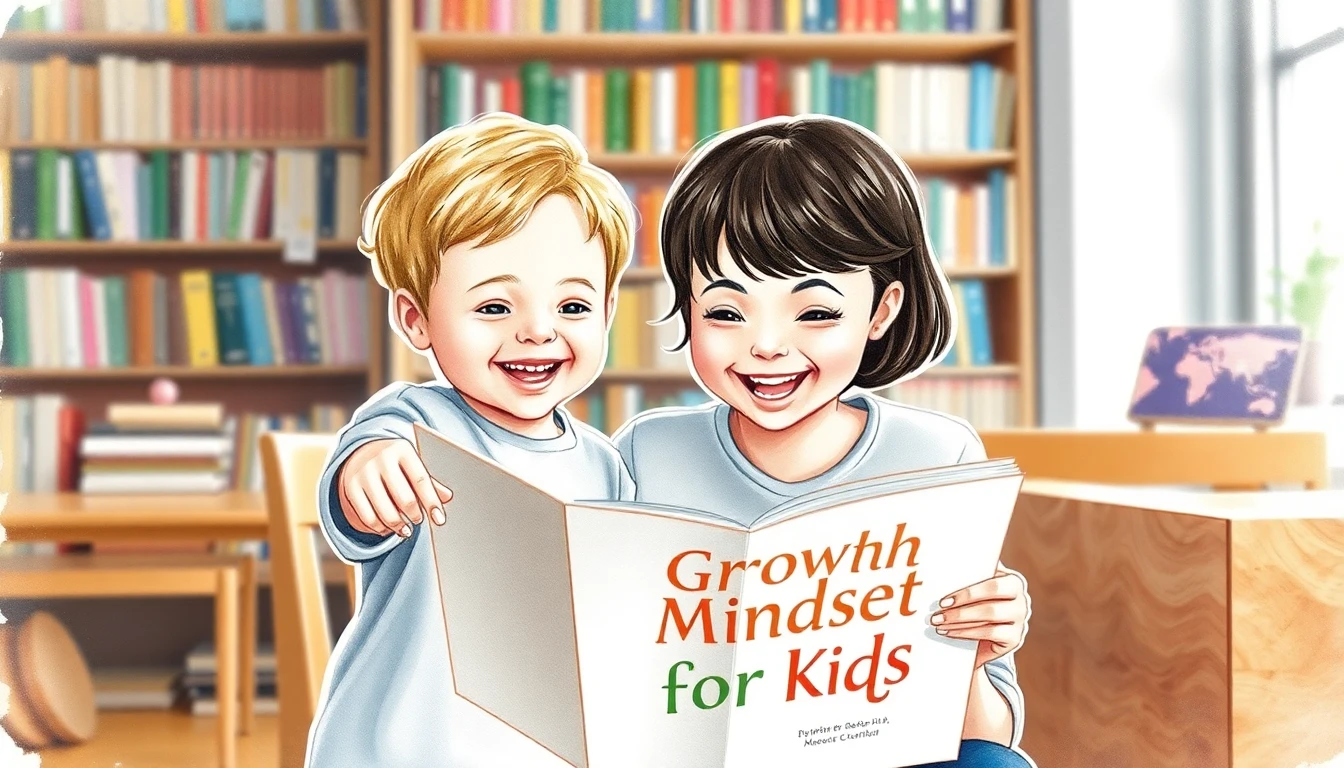
As parents, we all want our children to be happy, successful, and ready to thrive in a world that’s always changing. One of the greatest gifts you can give your child is a growth mindset. This means helping them believe that their abilities and intelligence can grow with effort, practice, and learning from mistakes.
Cultivating a growth mindset isn’t just about school success it’s about building resilience, a love of learning, and the confidence to face challenges head-on. In this guide, you’ll find 15 practical, research-backed tips to help your child embrace learning, persevere through difficulties, and reach their full potential. Let’s get started!
Understanding the Difference: Fixed vs. Growth Mindset

Before we dive into the tips, it’s important to understand the difference between a fixed mindset and a growth mindset. Recognizing these patterns in yourself and your child is the first step to making positive changes.
Fixed Mindset:
- Believes intelligence and talents are unchangeable
- Avoids challenges for fear of failure
- Sees effort as a sign of weakness
- Gives up easily after setbacks
- Feels threatened by others’ success
Growth Mindset:
- Believes abilities can be developed through effort and learning
- Embraces challenges as opportunities
- Sees effort as the path to mastery
- Bounces back from setbacks and learns from mistakes
- Finds inspiration in others’ success
| Characteristic | Fixed Mindset | Growth Mindset |
|---|---|---|
| Intelligence/Talent | Innate and fixed | Developable |
| Challenges | Avoided | Embraced |
| Effort | Sign of low ability | Path to mastery |
| Setbacks | Discouragement, giving up | Resilience, learning |
| Success of Others | Threatening | Inspirational |
Remember, adopting a growth mindset doesn’t mean ignoring natural talents it means believing everyone can improve and learn, no matter where they start.
15 Actionable Growth Mindset Tips for Parents

- Praise Effort and Process, Not Just Results: Instead of “You’re so smart!” try “I can see how much effort you put into that project!” Focus on the journey, not just the outcome.
- Embrace Mistakes as Learning Opportunities: When your child makes a mistake, ask, “What can you learn from this?” or “How could you try it differently next time?”
- Encourage Challenges: Support your child in taking on new challenges, even if they’re hard. Remind them it’s okay to struggle that’s how we grow!
- Model a Growth Mindset Yourself: Share your own challenges and how you learn from mistakes. Kids learn by watching you!
- Use the Power of “Yet”: When your child says, “I can’t do this,” add “yet.” It shows that with time and effort, they can improve.
- Focus on Improvement, Not Perfection: Celebrate progress, no matter how small. Remind your child that learning is a journey.
- Promote a Love of Learning: Encourage curiosity and exploration. Read together, try new activities, and make learning fun.
- Teach Problem-Solving Skills: Help your child break down problems and try different strategies. Ask, “What else could you try?”
- Read Books About Growth Mindset: Stories about perseverance and learning from mistakes can spark great conversations.
- Provide Specific and Constructive Feedback: Instead of “Good job,” try “I noticed you used a new strategy and it worked well!”
- Create a Supportive Environment: Make your home a safe place to make mistakes, ask questions, and take risks.
- Help Them Set Realistic Goals: Work together to set goals that are challenging but achievable. Celebrate each step forward.
- Encourage Persistence: Teach your child that setbacks are normal. Remind them that effort and determination lead to growth.
- Limit Fixed-Mindset Language: Avoid phrases like “You’re just not good at math.” Instead, say, “You can get better with practice.”
- Celebrate Effort and Resilience: Recognize your child’s hard work and courage, even if they don’t reach their goal right away.
Applying Growth Mindset to Homework and Extracurriculars

Growth mindset isn’t just for the classroom it’s for every part of life! Here’s how to apply these tips to homework and activities:
Homework:- Reframe tough problems as chances to learn something new.
- Focus on strategies: “What have you tried so far? What else could work?”
- Celebrate small wins to keep motivation high.
- Encourage collaboration learning from others is part of growth!
- Focus on skill-building and improvement, not just winning.
- Remind your child that mastering new skills takes time and effort.
- Value effort and dedication over natural talent.
- Encourage reflection: “What did you learn? What would you try next time?”
By applying growth mindset principles in these areas, you help your child see every challenge as a chance to grow.
Addressing Common Challenges in Implementing a Growth Mindset

Shifting to a growth mindset isn’t always easy. Here are some common challenges and how to handle them:
- Shifting Your Own Mindset: It’s normal to have fixed-mindset moments. Keep learning and practicing yourself!
- Resisting the Urge to Praise Talent: Focus on effort and strategies, not just natural ability.
- Dealing with Setbacks: Help your child see setbacks as learning opportunities, not failures.
- Balancing Growth Mindset with Realistic Expectations: Emphasize progress, not perfection. Set achievable goals and celebrate every step.
- External Pressures: Advocate for growth mindset practices at school and in your community.
Remember, it’s a journey for both you and your child. Be patient, stay positive, and celebrate progress together!
Frequently Asked Questions (FAQs) About Growth Mindset for Children

What age is best to start teaching a growth mindset?
It’s never too early! Even young children can learn that effort and practice help them grow. Start by modeling a growth mindset yourself and using positive, encouraging language.
How can I tell if my child has a fixed mindset?
Look for signs like avoiding challenges, giving up easily, or saying things like “I’m just not good at this.” These are clues your child may need more support in developing a growth mindset.
Is it okay to praise my child’s intelligence?
It’s better to praise effort, strategies, and progress. For example, “You worked so hard on that!” or “I noticed how you tried a new way to solve that problem.”
What if my child is naturally talented in a particular area?
Even talented kids need to work hard to reach their full potential. Focus on their effort, dedication, and the strategies they use to keep improving.
How can I help my child deal with failure?
Help your child see failure as a chance to learn. Talk about what went wrong, what they can do differently next time, and remind them that everyone makes mistakes.
What are some good books about growth mindset for children?
Try “Mindset!” by Carol Dweck (adapted for kids), “The Girl Who Never Made Mistakes” by Mark Pett and Gary Rubinstein, and “Beautiful Oops!” by Barney Saltzberg.
How can I encourage a growth mindset in older children or teenagers?
Have open conversations about growth mindset, share real-life examples, and encourage reflection on their own learning. Keep modeling a growth mindset yourself and offer ongoing support.
Conclusion: Empowering Your Child with a Growth Mindset

Fostering a growth mindset in your child is one of the best gifts you can give. By embracing these tips, you’re helping your child become more resilient, confident, and ready to take on life’s challenges. Remember, it’s not about being perfect it’s about learning, growing, and celebrating every step along the way. Here’s to raising lifelong learners and happy, successful kids!
